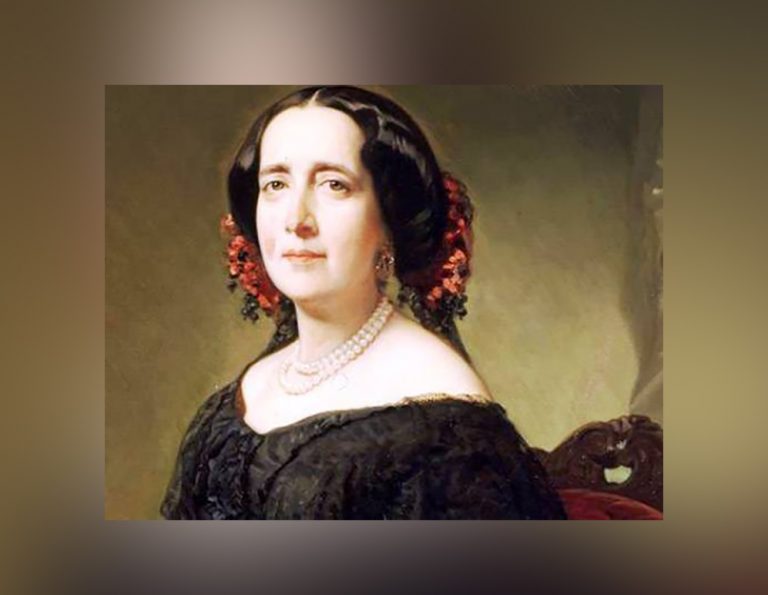If you approach the biography of Tula or La Peregrina, pseudonyms by which Gertrudis Gómez de Avellaneda is known, you may be curious about that ground-breaking woman in her personal and literary life. She is so misunderstood by the social prejudices of her time that she, despite her unquestionable merits, is denied entry to the Royal Academy of the Spanish Language because of her status as a woman.
On the other hand, to date, the disparity of evaluations about her work stands out, figures with passionate, controversial positions and in repeated misguided opportunities, question even her Cubanness, positions that are far from the criteria of Marti and Dulce María Loynaz.
None of this daunted Tula or La Peregrina, pseudonyms used by her who always felt like a principeña and Cuban; For this reason, in the letter of January 3rd, 1868 addressed to the Havana newspaper El Siglo, she honored herself of having been distinguished as a “Cuban writer.”
Tributes to an excellent Cuban
Undoubtedly, it refers to the tributes she received on the Island in 1860, one in the capital, organized by his fellow countryman José Ramón Betancourt, president of the Artistic and Literary Lyceum, where she was given the solid gold crown, imitation of two bouquets of laurel collected in an enameled ribbon of the same metal with the inscription: El Liceo de la Habana to Gertrudis Gómez de Avellaneda January of MDCCCLX.
What happened to the piece? It is a question that many intellectuals asked themselves since the 19th century. The donation made by Avellaneda to the Nuestra Señora de Belén church in the capital is known, but then no further details of her whereabouts have been discovered.
On the other hand, the society of instruction and recreation The Philharmonic, a significant cultural space of Puerto Príncipe, names her a Member of Merit on January 1st of that year; while in May it acquires a portrait of La Avellaneda to place it on the premises of the Society as a “award to our distinguished countrywoman for her enlightened talent.”
In this way, preparations continue in her native land, the ceremony is held on Sunday June 3rd, 1860. The theater of the Philharmonic building is adorned with natural ornaments, garlands of flowers in the shape of a medallion; in the center they placed gold letters on a crimson velvet background, the names: Sab, Saúl, Egilona, Baltasar, Alfonso Munio, symbolic characters of her works.
The poet was accompanied from her home by a commission of female members of the society, received at the entrance at nine o’clock in the evening by twelve gentlemen with torches, and at the foot of the stairs Mrs. Marquise of Santa Lucía escorted by a group of young ladies who wore flower wreaths to honor Tula.
Francisca Loret de Mola reads some verses by Esteban de Jesús Borrero and hands her a wreath of white flowers, to which it was attached the Diploma of the Philharmonic Society Merit Partner.
The artistic program was extensive, the concert with the San Fernando Orchestra began, it consisted of four parts with a careful selection of poems, dance and music, especially the operas by Rossini and Verdi. Amalia Simoni, with an extraordinary voice, performed the ballad “Caro nome” from the opera Rigoletto.
There was a reading of poems, by Antonio Napoles Fajardo, Francisco Agüero, Pamela Fernández, Antenor Lescano, Augusto Barrinaga and Esteban Agüero, a poem by Juan Antonio Frías, a black poet, was also unveiled.
Her words…
La Tula, excited, read, «Gentlemen: A great poet has said that hopes and memories are sung, but that present happiness is only enjoyed in silence. I now recognize the truth of these words. Seeing me among you, among the noble sons and beautiful daughters of my homeland; listening to the flattering words of your brotherly affection ». Then, she excused herself from the celebration.
Gertrudis Gómez de Avellaneda is a personality who provides Camagüey with prestige and pride as the cradle of Cuban Literature “she deserves to be caught by looks to the future, for the good of the present.”
Translated by: Aileen Álvarez García






